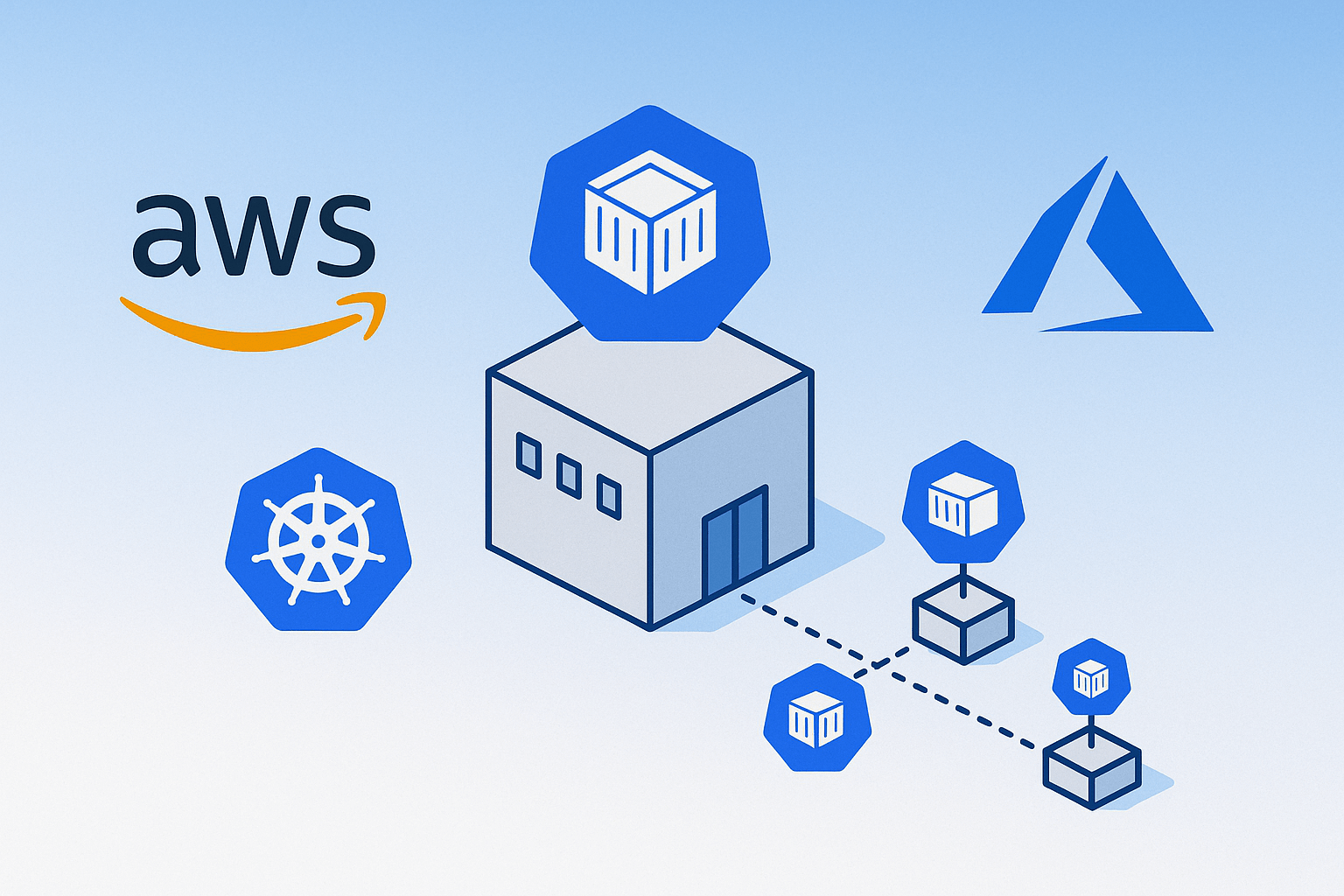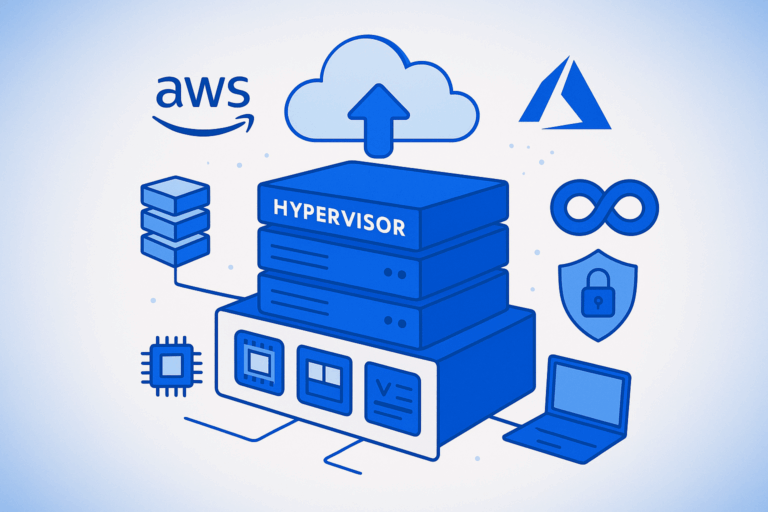Kubernetes at the Edge

AWS vs. Azure Implementations – The Ultimate Comparison Guide 🚀
Introduction: The Edge Computing Revolution is Here 🌐
The digital transformation landscape is experiencing a seismic shift. Kubernetes edge computing has emerged as the cornerstone of modern infrastructure strategy. Organizations worldwide are racing to deploy applications closer to their users. The result? Reduced latency, improved performance, and enhanced user experiences.
But here’s the challenge: choosing between AWS vs Azure implementations for edge Kubernetes deployments. This decision can make or break your edge computing strategy. The stakes have never been higher in today’s hyperconnected world.
Edge computing represents more than just a technological trend. It’s a fundamental reimagining of how we process, store, and deliver data. With the exponential growth of IoT devices, autonomous vehicles, and real-time applications, traditional cloud computing models are reaching their limits.
Consider this: A autonomous vehicle generates 4TB of data per day. Processing this data in a distant cloud data center isn’t feasible. The vehicle needs split-second decisions for safety-critical operations. This is where kubernetes on iot edge cloud becomes indispensable.

What is Kubernetes at the Edge? Understanding the Fundamentals 📚
Defining Edge Kubernetes Architecture
Kubernetes at the edge brings container orchestration to distributed computing environments. Unlike traditional centralized deployments, edge Kubernetes operates across multiple geographical locations. These deployments run closer to end-users and data sources.
Edge computing addresses three critical challenges:
- Latency reduction: Applications respond faster when processed locally
- Bandwidth optimization: Less data travels across networks
- Reliability improvement: Local processing continues during network outages
The Technology Stack Behind Edge Kubernetes
Modern edge kubernetes comparison reveals sophisticated technology stacks. These include:
- Container orchestration platforms (Kubernetes, OpenShift)
- Edge-specific distributions (K3s, MicroK8s, KubeEdge)
- Network management tools (Service mesh, CNI plugins)
- Security frameworks (Cyber Security protocols, encryption)
The convergence of AI and edge computing creates unprecedented opportunities. Machine learning models can now run directly on edge devices. This eliminates the need for constant cloud connectivity.
AWS Edge Computing Solutions: Amazon’s Comprehensive Approach 🔧
AWS Wavelength: Bringing Cloud to the Edge
AWS Cloud technology offers multiple edge computing solutions. AWS Wavelength represents their flagship edge platform. It embeds AWS compute and storage services within telecom providers’ data centers.
Key AWS edge services include:
- AWS Outposts: Hybrid cloud infrastructure for on-premises deployments
- AWS Snow Family: Physical data transfer and edge computing devices
- Amazon EKS Anywhere: Kubernetes management for edge locations
- AWS IoT Greengrass: Edge runtime for IoT applications
Deploying Kubernetes at the Edge with AWS
Deploying kubernetes at the edge through AWS follows a structured approach:
Step 1: Infrastructure Preparation
- Configure AWS Outposts or Wavelength zones
- Set up network connectivity and security policies
- Establish monitoring and logging infrastructure
Step 2: EKS Anywhere Installation
- Download and configure EKS Anywhere CLI tools
- Create cluster configuration files
- Deploy the Kubernetes control plane
Step 3: Application Deployment
- Containerize applications using Docker
- Create Kubernetes manifests (deployments, services, ingress)
- Implement DevOps pipelines for continuous deployment
Real-World AWS Edge Implementation: Smart Manufacturing
A global automotive manufacturer implemented AWS edge containers across 50 factories. Each factory runs a local EKS cluster processing real-time production data. The implementation reduced response times from 200ms to 5ms.
Technical specifications:
- Hardware: AWS Outposts with Intel Xeon processors
- Software: EKS Anywhere with Calico networking
- Applications: Predictive maintenance AI models
- Security: Private subnets with VPC endpoints

Azure Edge Computing Solutions: Microsoft’s Intelligent Edge 🌟
Azure Arc: Unified Management Across Hybrid Environments
Azure Cloud technology emphasizes unified management through Azure Arc. This service extends Azure management capabilities to any infrastructure. Azure Arc supports Kubernetes clusters running anywhere.
Microsoft’s edge portfolio includes:
- Azure Stack Edge: AI-enabled edge computing devices
- Azure IoT Edge: Containerized IoT workloads
- Azure Arc-enabled Kubernetes: Multi-cloud Kubernetes management
- Azure Cognitive Services: AI services at the edge
Azure Arc vs AWS: Architectural Differences
| Feature | Azure Arc | AWS Edge |
|---|---|---|
| Management Model | Centralized through Azure Portal | Distributed across multiple services |
| Kubernetes Support | Native Arc-enabled clusters | EKS Anywhere and third-party |
| Hybrid Cloud | Seamless Azure integration | AWS-specific tooling required |
| AI Integration | Built-in Cognitive Services | Separate SageMaker deployments |
| Security Model | Azure Active Directory integration | IAM with additional edge policies |
Implementation Strategy: Azure Arc Kubernetes
Azure Arc simplifies edge kubernetes comparison by providing consistent management. The deployment process involves:
Phase 1: Environment Setup
# Connect existing Kubernetes cluster to Azure Arc
az connectedk8s connect --name edge-cluster-01 --resource-group production-rgPhase 2: Policy Application
- Apply Azure Policy for governance
- Configure GitOps with Azure Arc
- Set up monitoring with Azure Monitor
Phase 3: Application Deployment
- Deploy applications using Helm charts
- Implement Automation through Azure DevOps
- Configure backup and disaster recovery
Edge Computing Use Cases: Where Kubernetes Shines ✨
IoT and Industrial Applications
Kubernetes on iot edge cloud transforms industrial operations. Smart factories use edge Kubernetes for:
- Real-time quality control: Computer vision models detect defects instantly
- Predictive maintenance: AI algorithms predict equipment failures
- Supply chain optimization: Edge analytics optimize logistics
Retail and Customer Experience
Modern retail leverages edge computing for enhanced customer experiences:
- Personalized recommendations: AI models run locally for instant suggestions
- Inventory management: Real-time stock tracking across locations
- Payment processing: Secure, low-latency transaction processing
Healthcare and Life Sciences
Healthcare organizations deploy edge Kubernetes for:
- Medical imaging: Local processing of X-rays and MRI scans
- Patient monitoring: Real-time vital sign analysis
- Drug discovery: Edge-based molecular modeling
Security Considerations for Edge Kubernetes 🔒
Cyber Security Challenges at the Edge
Cyber Security becomes complex in distributed edge environments. Traditional perimeter-based security models don’t apply. Edge deployments face unique threats:
- Physical access risks: Edge devices in unsecured locations
- Network segmentation: Complex multi-site networking
- Certificate management: Distributed PKI infrastructure
- Compliance requirements: Data sovereignty regulations
Implementing Zero Trust Architecture
Modern edge security requires Zero Trust principles:
Identity and Access Management
- Multi-factor authentication for all edge access
- Role-based access control (RBAC) for Kubernetes
- Service-to-service authentication using certificates
Network Security
- Micro-segmentation using network policies
- Encrypted communication between all components
- Regular security scanning and vulnerability assessment
AWS vs Azure Security Comparison
| Security Feature | AWS Edge | Azure Arc |
|---|---|---|
| Identity Management | IAM with STS tokens | Azure AD integration |
| Network Security | VPC with security groups | Virtual networks with NSGs |
| Encryption | KMS integration | Azure Key Vault |
| Compliance | 100+ compliance programs | 90+ compliance certifications |
| Monitoring | CloudTrail and GuardDuty | Azure Security Center |
DevOps and Automation for Edge Kubernetes 🔄
Building CI/CD Pipelines for Edge Deployments
DevOps practices become critical for managing distributed edge infrastructure. DevOps Engineer teams need specialized workflows for edge deployments.
Continuous Integration Strategies:
- Multi-architecture builds: ARM and x86 container images
- Edge-specific testing: Network partition and latency simulation
- Security scanning: Container vulnerability assessment
Continuous Deployment Approaches:
- GitOps workflows: Declarative configuration management
- Blue-green deployments: Zero-downtime edge updates
- Canary releases: Gradual rollout across edge locations
Terraform for Edge Infrastructure
Terraform enables infrastructure as code for edge deployments. Cloud Technology teams use Terraform for:
# Example Terraform configuration for AWS Wavelength
resource "aws_wavelength_carrier_gateway" "edge_gateway" {
vpc_id = aws_vpc.edge_vpc.id
carrier_ip = "203.0.113.12"
}
resource "aws_subnet" "wavelength_subnet" {
vpc_id = aws_vpc.edge_vpc.id
cidr_block = "10.0.1.0/24"
availability_zone = "us-west-2-wl1-sea-wlz-1"
}Monitoring and Observability
Edge environments require specialized monitoring approaches:
Metrics Collection:
- Infrastructure metrics: CPU, memory, network, storage
- Application metrics: Response times, error rates, throughput
- Business metrics: User engagement, transaction volume
Logging Strategies:
- Centralized logging: Aggregation across edge locations
- Local buffering: Handling network connectivity issues
- Log retention: Compliance and forensic requirements
Implementation Challenges and Solutions 🛠️
Network Connectivity and Bandwidth Limitations
Edge deployments face unique networking challenges:
Intermittent Connectivity:
- Implement local data caching strategies
- Use asynchronous communication patterns
- Design for graceful degradation
Bandwidth Constraints:
- Optimize container image sizes
- Implement differential updates
- Use edge-specific image registries
Resource Constraints and Optimization
Edge devices typically have limited resources:
CPU and Memory Optimization:
- Use lightweight Kubernetes distributions (K3s, MicroK8s)
- Implement resource quotas and limits
- Optimize application code for edge environments
Storage Management:
- Implement data lifecycle policies
- Use local storage efficiently
- Plan for data synchronization
Scaling and Management Complexity
Managing hundreds or thousands of edge locations requires:
Automated Deployment:
- Infrastructure as code templates
- Configuration management tools
- Automated provisioning workflows
Centralized Management:
- Single pane of glass for monitoring
- Standardized deployment patterns
- Automated compliance checking
Case Study: Global Retailer’s Edge Kubernetes Implementation 📊
Business Challenge and Requirements
A global retail chain with 5,000+ stores needed real-time inventory management. Traditional cloud-based systems introduced 500ms+ latency. Customer experience suffered during peak shopping periods.
Requirements:
- Sub-10ms response times for inventory queries
- 99.9% availability during business hours
- Support for 1M+ concurrent transactions
- Compliance with data protection regulations
Architecture Design and Implementation
Solution Architecture:
┌─────────────────┐ ┌─────────────────┐ ┌─────────────────┐
│ Store Edge │ │ Regional Hub │ │ Central Cloud │
│ │ │ │ │ │
│ ┌─────────────┐ │ │ ┌─────────────┐ │ │ ┌─────────────┐ │
│ │ K3s Cluster │ │◄──►│ │ EKS Cluster │ │◄──►│ │ EKS Cluster │ │
│ │ │ │ │ │ │ │ │ │ │ │
│ │ - POS Apps │ │ │ │ - Analytics │ │ │ │ - ML Models │ │
│ │ - Inventory │ │ │ │ - Sync Svc │ │ │ │ - Reporting │ │
│ │ - Cache │ │ │ │ - Backup │ │ │ │ - Training │ │
│ └─────────────┘ │ │ └─────────────┘ │ │ └─────────────┘ │
└─────────────────┘ └─────────────────┘ └─────────────────┘Implementation Timeline:
- Phase 1 (Months 1-3): Pilot deployment in 10 stores
- Phase 2 (Months 4-8): Regional rollout to 500 stores
- Phase 3 (Months 9-12): Global deployment across all locations
Results Achieved:
- Response time: Reduced from 500ms to 8ms
- Availability: Increased to 99.95%
- Cost savings: 40% reduction in cloud computing costs
- Customer satisfaction: 25% improvement in checkout experience
Transform Business with Cloud
Devolity simplifies state management with automation, strong security, and detailed auditing.

Devolity’s Edge Kubernetes Expertise 🏆
Optimizing Your Edge Computing Strategy
Devolity Hosting brings unparalleled expertise in edge Kubernetes implementations. Our certified team has successfully deployed edge solutions for Fortune 500 companies across various industries.
Our Achievements:
- 100+ successful edge deployments across AWS and Azure
- ISO 27001 certified security practices
- 24/7 managed services with 99.9% SLA
- Multi-cloud expertise spanning AWS, Azure, and Google Cloud
Certification Portfolio:
- AWS Certified Solutions Architect Professional
- Azure Solutions Architect Expert
- Certified Kubernetes Administrator (CKA)
- Terraform Associate certification
Service Offerings:
- Edge strategy consulting: Architecture design and planning
- Implementation services: End-to-end deployment and migration
- Managed operations: 24/7 monitoring and support
- Training and enablement: DevOps Engineer skill development
Devolity’s Competitive Advantages:
- Vendor-agnostic approach: Best solution regardless of cloud provider
- Industry-specific expertise: Healthcare, finance, retail, manufacturing
- Proven methodologies: Accelerated deployment frameworks
- Global delivery model: Support across multiple time zones
Practical Implementation Example: IoT Edge Deployment 🔧
Step-by-Step AWS Implementation
Scenario: Deploying temperature monitoring for a cold storage facility using AWS edge infrastructure.
Prerequisites:
- AWS account with appropriate permissions
- Docker installed locally
- kubectl and aws CLI configured
Step 1: Infrastructure Setup
# Create EKS Anywhere cluster
eksctl anywhere create cluster -f cluster-config.yaml
# Verify cluster status
kubectl get nodesStep 2: Application Deployment
# temperature-monitor-deployment.yaml
apiVersion: apps/v1
kind: Deployment
metadata:
name: temperature-monitor
spec:
replicas: 3
selector:
matchLabels:
app: temperature-monitor
template:
metadata:
labels:
app: temperature-monitor
spec:
containers:
- name: monitor
image: devolity/temp-monitor:v1.0
resources:
requests:
memory: "64Mi"
cpu: "250m"
limits:
memory: "128Mi"
cpu: "500m"
env:
- name: SENSOR_ENDPOINT
value: "http://sensor-gateway:8080"Step 3: Service Configuration
# temperature-service.yaml
apiVersion: v1
kind: Service
metadata:
name: temperature-service
spec:
selector:
app: temperature-monitor
ports:
- port: 80
targetPort: 8080
type: ClusterIPStep 4: Monitoring Setup
# Deploy Prometheus for monitoring
helm install prometheus prometheus-community/kube-prometheus-stack
# Configure alerts for temperature thresholds
kubectl apply -f temperature-alerts.yamlStep-by-Step Azure Implementation
Scenario: Same temperature monitoring using Azure Arc-enabled Kubernetes.
Step 1: Connect Cluster to Azure Arc
# Install Azure Arc agents
az connectedk8s connect --name cold-storage-cluster --resource-group edge-rg
# Verify connection
az connectedk8s show --name cold-storage-cluster --resource-group edge-rgStep 2: Deploy using GitOps
# Configure GitOps with Azure Arc
az k8s-configuration create \
--name temperature-config \
--cluster-name cold-storage-cluster \
--resource-group edge-rg \
--repository-url https://github.com/devolity/edge-configs \
--cluster-type connectedClustersPerformance Comparison Results:
| Metric | AWS Implementation | Azure Implementation |
|---|---|---|
| Deployment Time | 45 minutes | 35 minutes |
| Management Complexity | Medium | Low |
| Monitoring Integration | CloudWatch + Prometheus | Azure Monitor native |
| Cost (Monthly) | $1,200 | $1,100 |
| Learning Curve | Steep | Moderate |
Troubleshooting Guide: Common Edge Kubernetes Issues 🛠️
Connectivity and Network Issues
Problem: Intermittent pod connectivity at edge locations
Symptoms:
- Pods cannot reach external services
- DNS resolution failures
- Service mesh connectivity issues
Solutions:
- Check network policies:
kubectl get networkpolicy -A
kubectl describe networkpolicy <policy-name>- Verify DNS configuration:
kubectl run debug-pod --image=busybox --rm -it -- nslookup kubernetes.default- Test service connectivity:
kubectl exec -it <pod-name> -- wget -qO- http://service-name:port/healthResource Constraints and Performance
Problem: Pods frequently restarted due to resource limits
Symptoms:
- High memory or CPU usage
- OOMKilled pod events
- Performance degradation
Solutions:
- Analyze resource usage:
kubectl top pods --sort-by=memory
kubectl describe pod <pod-name> | grep -A 5 "Events:"- Optimize resource requests and limits:
resources:
requests:
memory: "256Mi"
cpu: "100m"
limits:
memory: "512Mi"
cpu: "200m"- Implement horizontal pod autoscaling:
kubectl autoscale deployment <deployment-name> --cpu-percent=70 --min=1 --max=5
Storage and Data Persistence
Problem: Data loss during pod restarts
Symptoms:
- Application state not persisted
- Database connectivity issues
- File system corruption
Solutions:
- Configure persistent volumes:
apiVersion: v1
kind: PersistentVolumeClaim
metadata:
name: app-storage
spec:
accessModes:
- ReadWriteOnce
resources:
requests:
storage: 10Gi- Implement backup strategies:
# Create volume snapshots
kubectl apply -f volume-snapshot.yaml- Monitor storage usage:
kubectl exec -it <pod-name> -- df -hSecurity and Authentication Issues
Problem: Service account authentication failures
Symptoms:
- 403 Forbidden errors
- Cannot access Kubernetes API
- RBAC permission denied
Solutions:
- Verify service account permissions:
kubectl auth can-i create pods --as=system:serviceaccount:default:my-sa- Check role bindings:
kubectl get rolebinding,clusterrolebinding --all-namespaces | grep <service-account>- Update RBAC policies:
apiVersion: rbac.authorization.k8s.io/v1
kind: ClusterRoleBinding
metadata:
name: edge-admin
subjects:
- kind: ServiceAccount
name: edge-service-account
namespace: default
roleRef:
kind: ClusterRole
name: cluster-admin
apiGroup: rbac.authorization.k8s.ioConclusion: Choosing Your Edge Kubernetes Strategy 🎯
The edge kubernetes comparison between AWS and Azure reveals distinct advantages for different use cases. AWS edge containers excel in IoT-heavy environments with comprehensive device management. Azure Arc provides superior hybrid cloud management with seamless integration.
Key decision factors:
- Existing cloud investments: Leverage current provider relationships
- Management complexity: Azure Arc offers simpler unified management
- IoT requirements: AWS provides more comprehensive IoT services
- Hybrid cloud needs: Azure excels in multi-cloud scenarios
Future trends in edge computing include:
- AI at the edge: More intelligent edge applications
- 5G integration: Ultra-low latency edge services
- Serverless edge: Function-as-a-Service at edge locations
- Green computing: Sustainable edge infrastructure
The choice between AWS vs Azure ultimately depends on your specific requirements. Consider factors like existing infrastructure, team expertise, and long-term strategy.
Ready to implement edge Kubernetes? Start with a pilot project at one location. Gradually expand based on lessons learned. Both AWS and Azure provide excellent platforms for deploying kubernetes at the edge.
Related Resources and Further Reading 📚
Official Documentation
- AWS EKS Anywhere Documentation
- Azure Arc-enabled Kubernetes
- Kubernetes Official Documentation
- Red Hat OpenShift
Industry Best Practices
- Terraform Edge Infrastructure Patterns
- DevOps Best Practices by Atlassian
- Cloud Native Computing Foundation
- Spacelift Infrastructure Management
Automation and AI Integration
Why choose Devolity
Unmatched Expertise in
Cloud and Cybersecurity
Devolity team of certified professionals brings decades of combined experience in managing complex cloud environments and defending against evolving cyber threats.
01
End-to-End Solutions for Every Business Need
DevOps with Cybersecurity Services: Hybrid/multi-cloud management, cost optimization, and DevOps integration with Risk assessments.
02
Customized Strategies, Not One-Size-Fits-All
We understand every business is unique. Devolity prioritizes collaboration, crafting bespoke solutions aligned with your industry, goals, and risk profile.
03
Proactive Protection with 24/7 Vigilance
Cyber threats never sleep—and neither do we. Devolity Security Operations Center (SOC) offers round-the-clock monitoring, rapid incident response.






